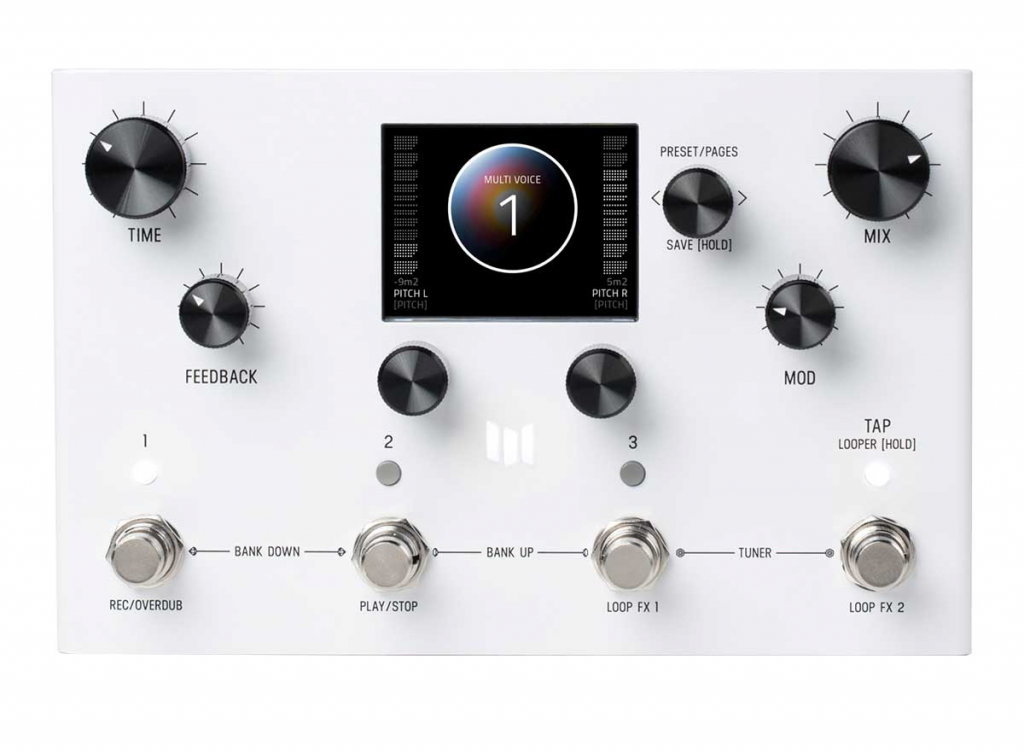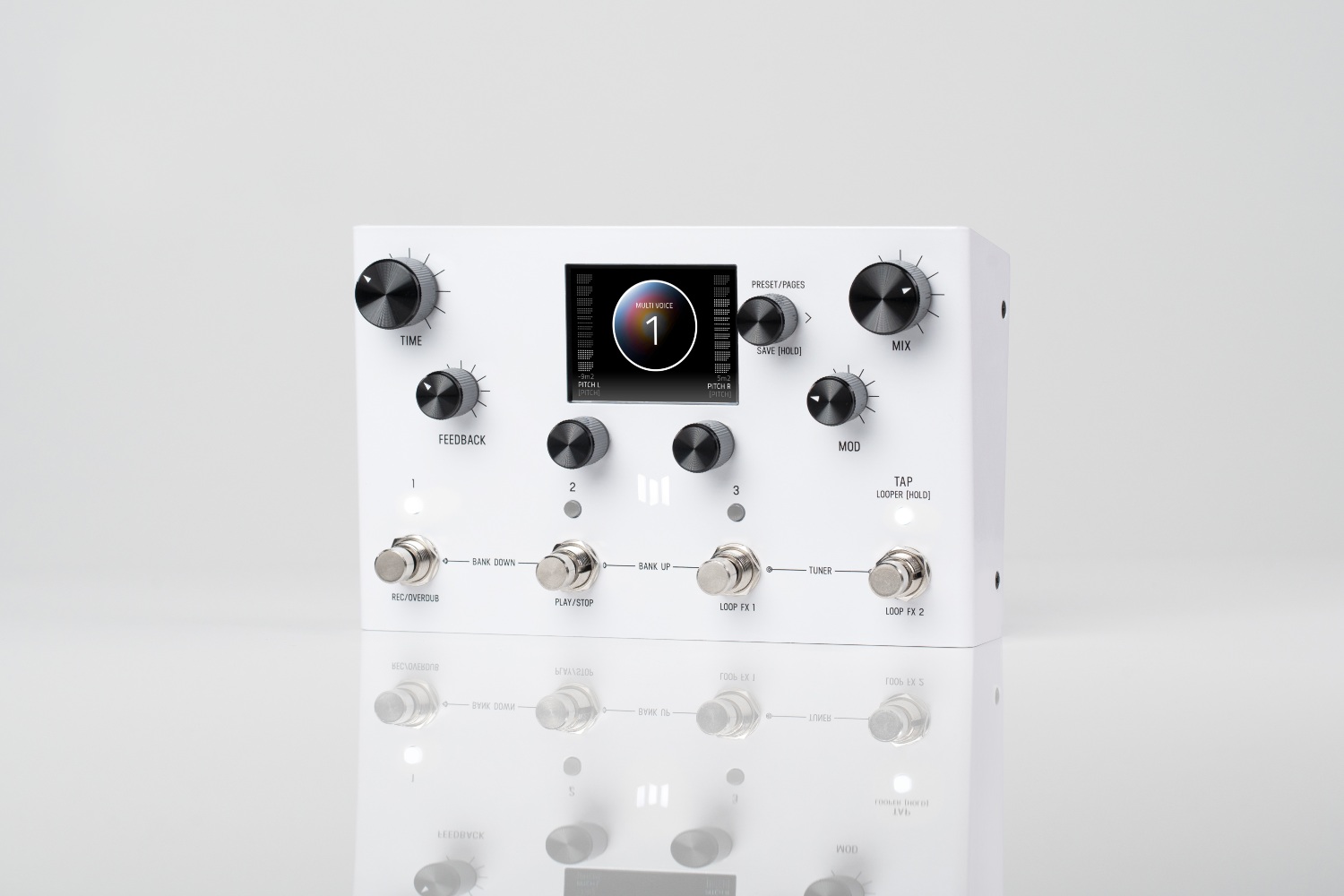Pedals have come a long way since those first few attempts at tremolos, fuzzes, and phasers emerged throughout the ‘50s and ‘60s
Not only are pedals now a massive part of our sounds, they’re more than just a steel chassis with a single function, thanks to massive improvements in technology. This is maybe most notable in the rapidly-increasing power available for DSP chips, allowing pedals to become mini computers and handle more complex reverb algorithms, toggle between different amplifiers, cabinets, and rooms, as well as just about any other variant.
While there are brands that have made massive leaps forward with DSP processing in guitar and bass products, a company like Meris is changing the way we approach guitar and audio products, kicking the door down to a wide new world of computing opportunities.
Read all the latest features, columns and more here.
Meris is led by three uniquely-versed professionals, namely Terry Burton of Strymon fame, Jinna Kim, a multimedia designer responsible for Meris’ unique look, feel, and messaging, and Angelo Mazzocco who was heavily involved in Line 6’s DSP products as an engineer.
Meris produces both guitar and pro audio products, the latter being a fine selection of 500 series modules. Firstly, the 440 Mic Preamp is a simple preamp with gain and output controls before some EQ settings and phase, pad, and phantom switches. What sets the 440 apart, not including the Cinemag-wound transformers, is the added effects loop, allowing you to add guitar pedals into your recording chain. A simple send and return is available via 1⁄4” jacks, so using your effects pedals in your mixes is simple.
Alongside the 440 is the Ottobit, a cleverly-named bit crusher and ‘Sonic Destroy’ module, again with some super unique controls: a pot to move between AM/FM signals, and LFO depth control, ringmod frequency, and more. If cleaner sounds are more your thing, Meris also offers an algorithmic DSP reverb in the Mercury 7. Wide, lush, and clean reverbs a plenty with some super simple controls to help you find the reverb you’ve never been able to nail with another unit.
Most recently, Meris has unveiled the LVX. It’s difficult to compare the LVX to much else on the market, because it’s such a unique product that only could’ve come from the minds of three experts in their respective fields. Simply put, the LVX is a Modular Delay System.
What makes the LVX so unique is the sheer amount of different delays types and parameters available, but also the customisable (and saveable) nature of it all. With the rising popularity of home recording, as well as more and more players having a better and better understanding of the rules of signal flow (as well as how to break them), a modular system is ripe for the market.
In addition to standard controls like tone, feedback, mix, and mod/modulation, the LVX features three control knobs, C1, C2, and C3 that help the user dive deeper and deeper in controls via the dimmable screen – perfect for adjusting the screen so it can (or can’t) be seen on stage. The LVX features a bunch of the best from the rest of Meris’ line, such as Ottobit Jr, Hedra, Enzo, or Polymoon, which are insertable into the signal flow at different stages and used along with other features such as the ‘always available’ 60-second looper.
The sheer level of detail that you can go into customising sounds can be dizzying, but Meris allows us to control every level of our sound. For example, the modulation alone has speed, depth, type, mix, and locations knobs, the location allowing us to insert the modulation before or after the delay. Similar controls are available for other parameters such as filter, preamp, delay, pitch, all of which slowly unfold in the mindmap-like bubbles on the LVX’s screen, and begin to show just how many levels of control the LVX has to offer.

Delay type is a great one to start with, as the LVX offers digital, BBD, and magnetic delay types to give you classic, clean digital delay, bucket brigade chip delay, or magnetic tape style delay. These are all broken up into configurable delay structures that give you access to parameters that make the delay/s Reverse, MultiTap, MultiFilter, Standard or Poly, the latter being a dual version of Meris’ own Polymoon delay.
While most of these sentences are a mouthful, and eyeful, and maybe a brain-full, it’s the sheer limitlessness that the Meris LVX exudes that make it such a complicated and beautiful beast. For Meris to have given users the control that they have in an intuitive box is beyond me. It could easily have been an overwhelming and redundant design, offering many options but burying them in pages and pages of menus – but Meris have made the LVX function and feel like a regular delay pedal – albeit offering every parameter you may want.
You can dive deep into the Meris at home or in the studio, then save and recall them for the stage. Meris as a company brings unique experience to the table, but ultimately they design and innovate products that are usable for the player. You can swim in the shallows if you want, but a deep ocean of options are available to you if you choose to dip a toe.
Head to Meris for more information. For local enquiries, reach out to Studio Connections.







